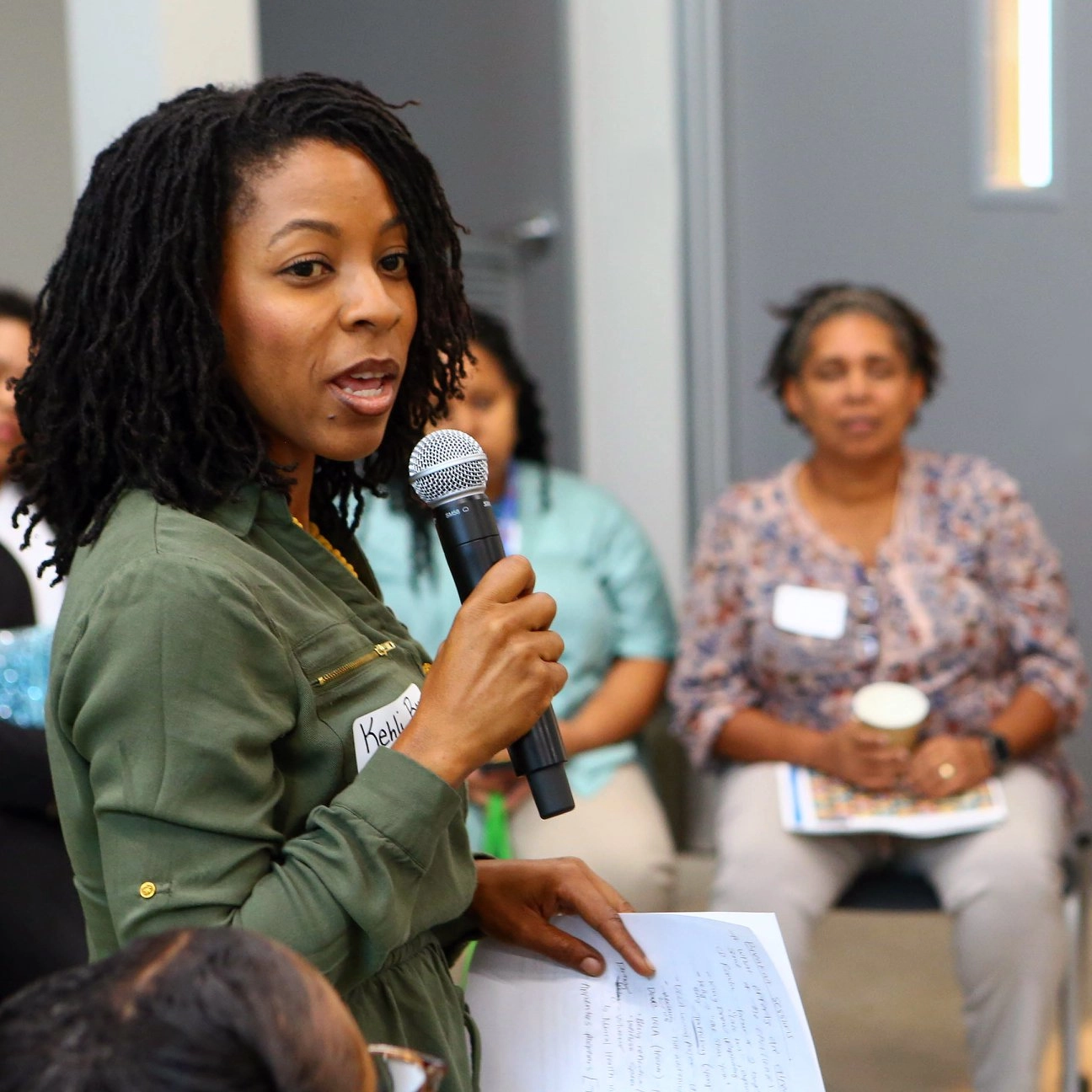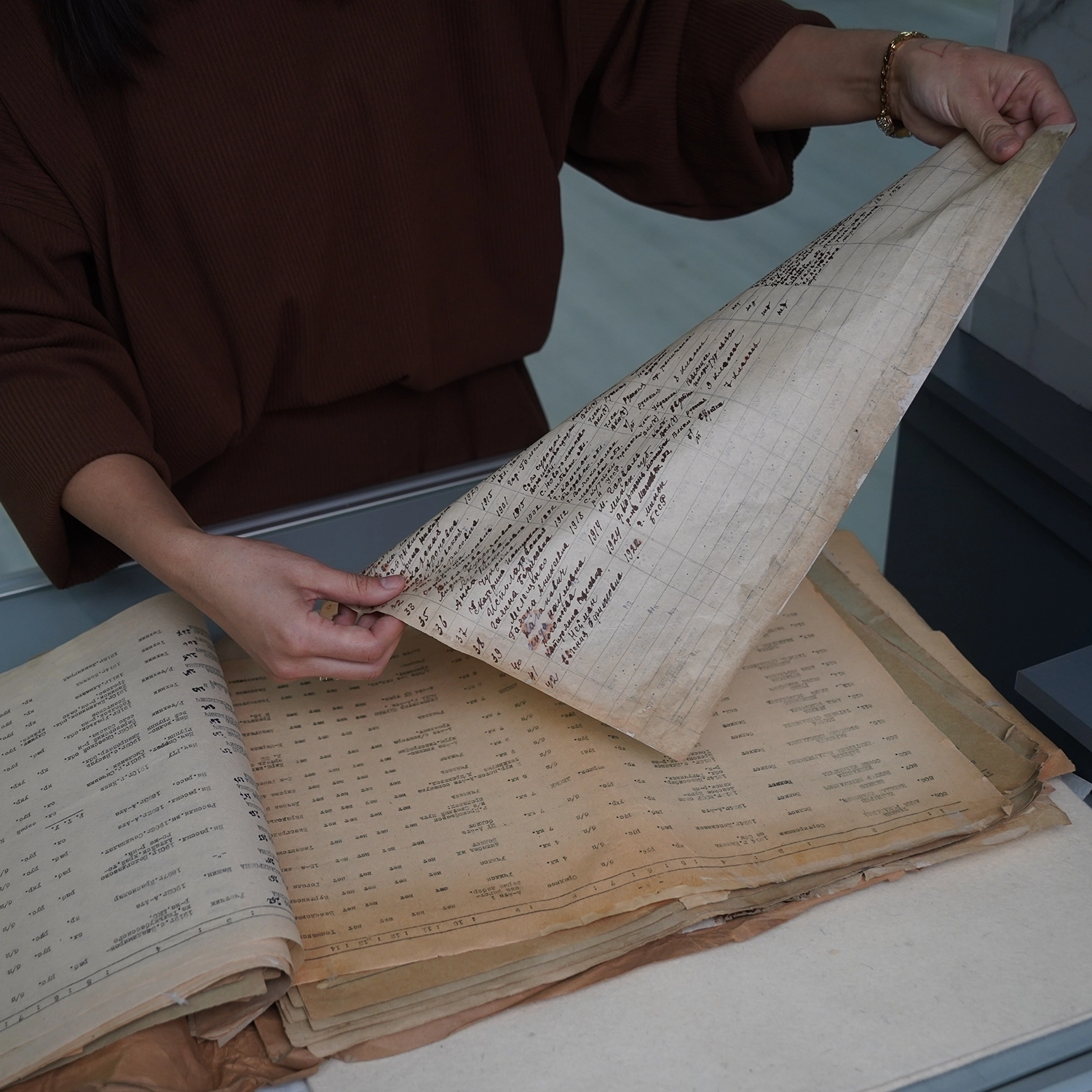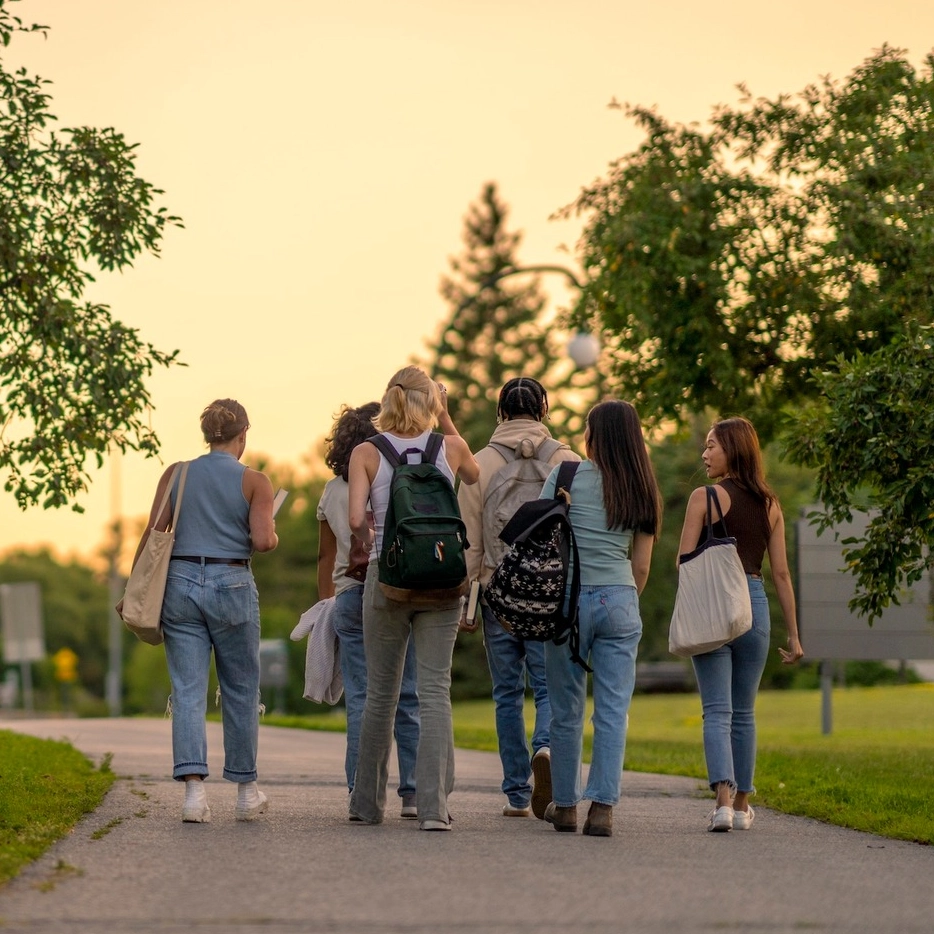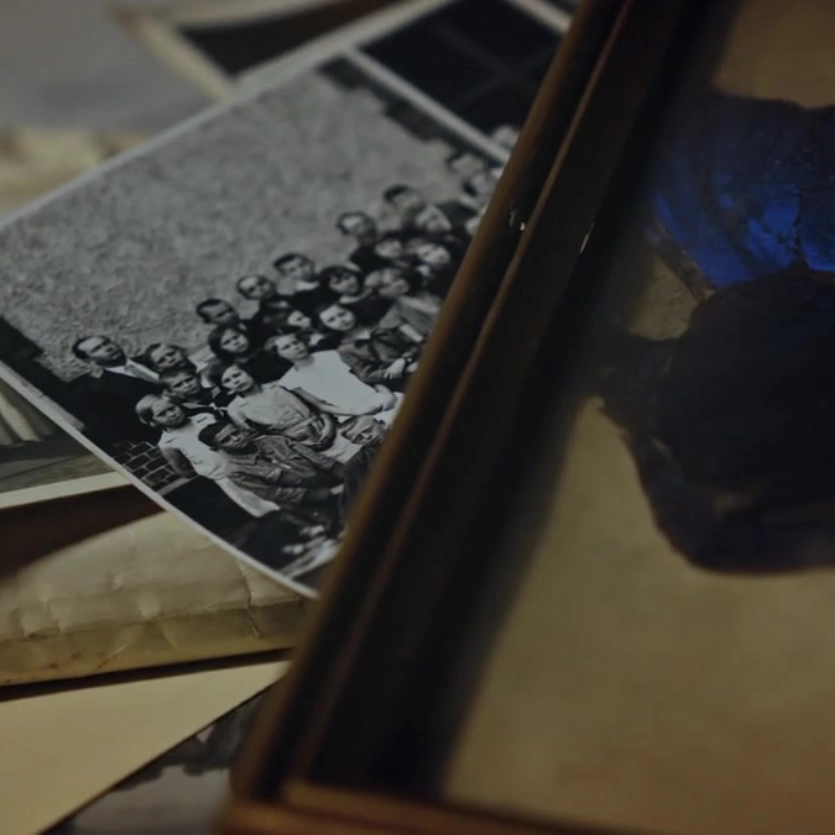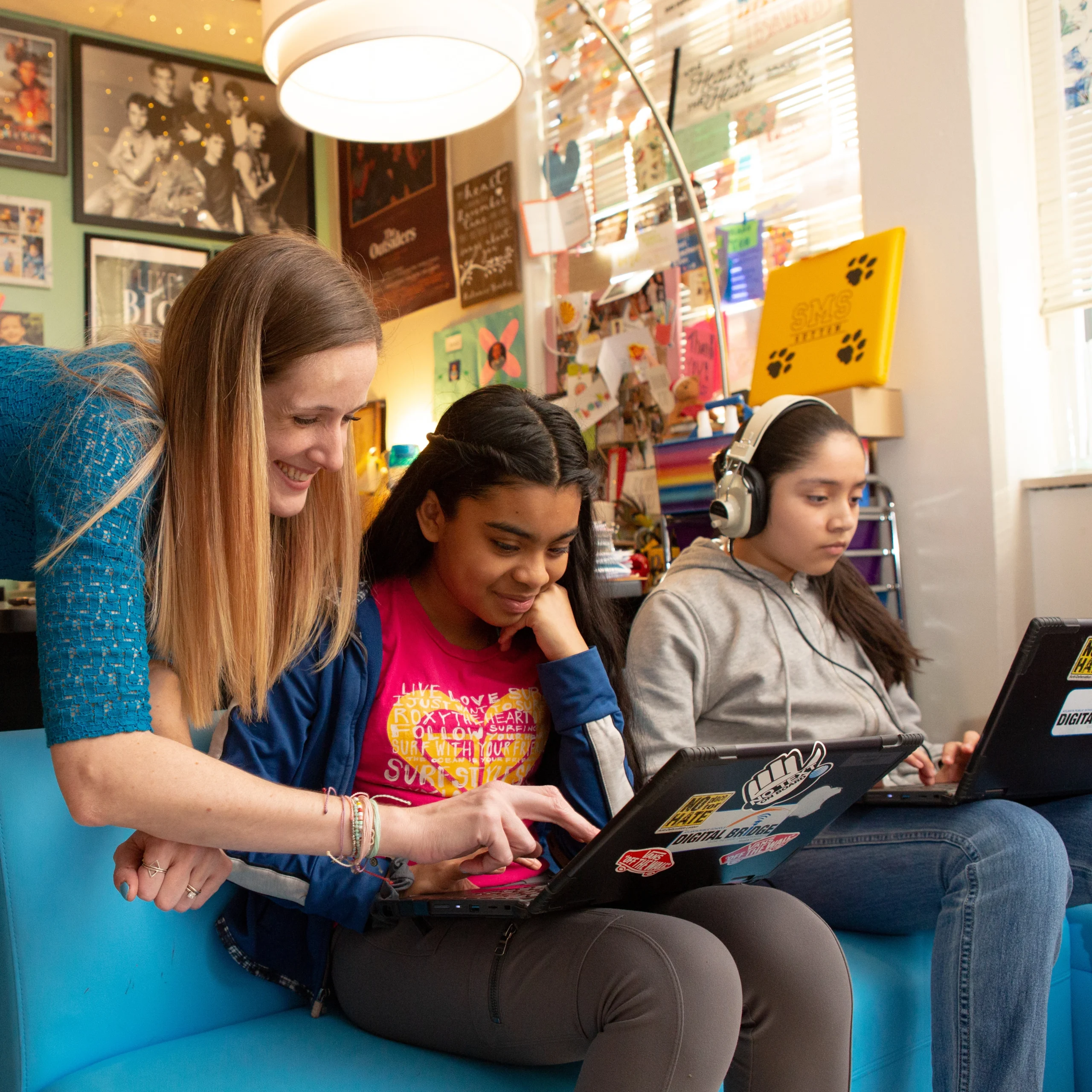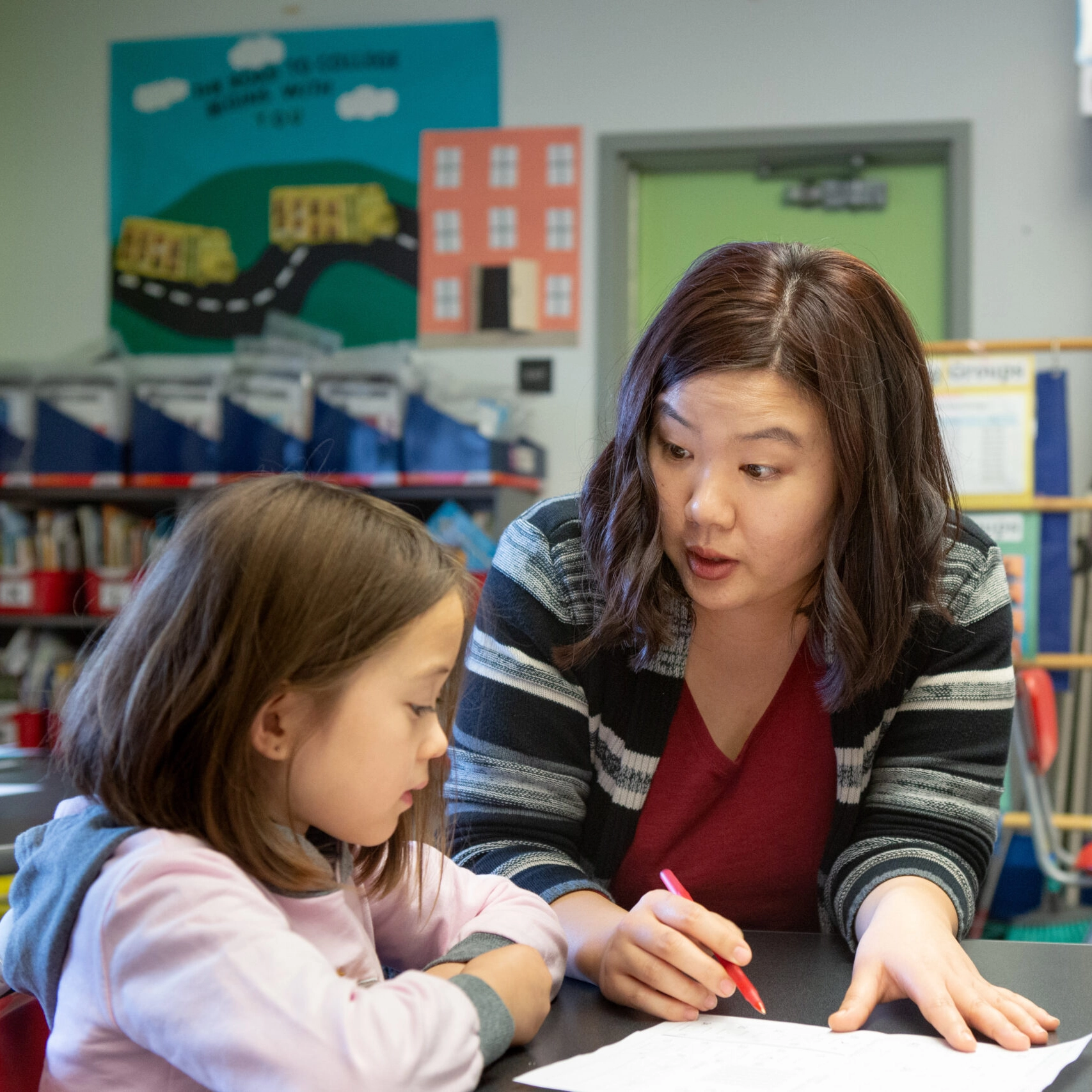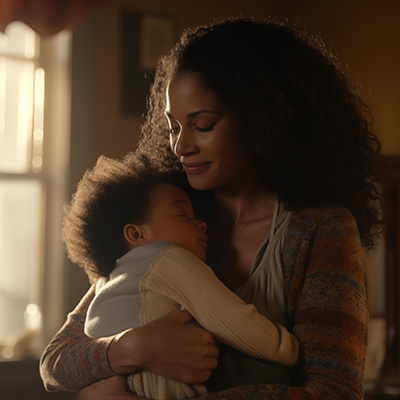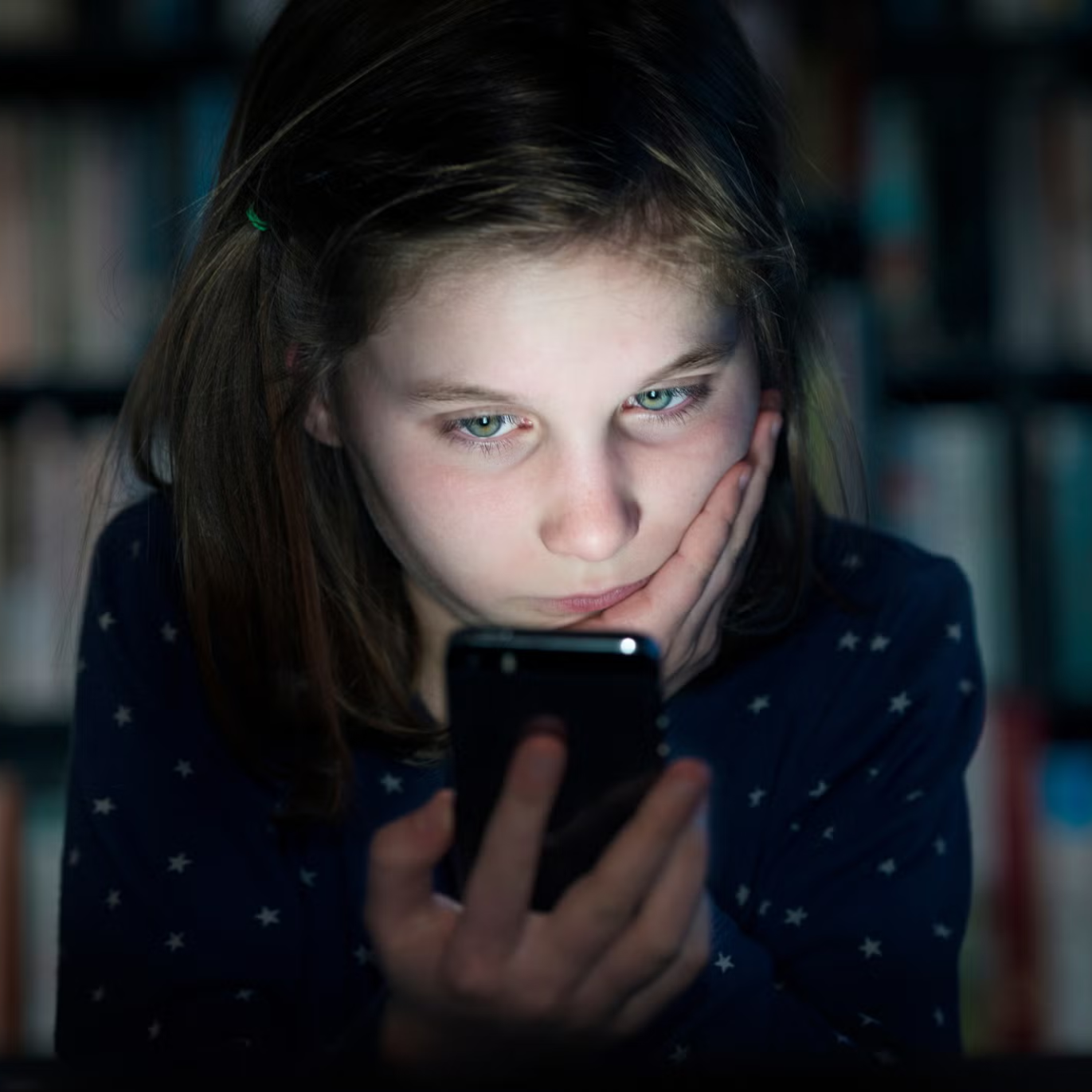From the Ground Up: Youth-Led Research with CONNECT Creates Environmental Learning at UCLA Lab School
By Joanie Harmon
November 14, 2025
At UCLA Lab School, classrooms double as research laboratories — places where teachers, students, and university researchers collaborate to reimagine how children learn. Through UCLA CONNECT, these partnerships have sparked discoveries that reach far beyond one campus, influencing how educators nationwide think about teaching, learning, and equity.
CONNECT links scholars in fields like education, psychology, and anthropology with teachers and administrators at UCLA Lab School to test new approaches and translate research into everyday classroom practice.
Recent projects include, “Teacher Moves Used to Engage Diverse Students with Disabilities in Math Instruction”; “Storytelling and Writing in Kindergarten STEAM Curriculum”; “Foraging, Diverse Local Food Consumption, and School Connectedness”; and “Critical Algorithmic Literacy: Bridging Computer Science and Critical Media Literacy in the Elementary Classroom.”
CONNECT also provides research briefs, such as, “Using Pedagogical Documentation in Inquiry-Based Teaching & Learning” and hosts an annual Research Forum highlighting work with CONNECT by UCLA researchers, students, and interns.

One recent project, led by Upper II demonstration teachers Lorrie Cariaga and Jennifer Williams in collaboration with CONNECT researcher Christine Lee, began with a simple question from fifth graders: Could we build a greenhouse on campus? What followed was a powerful lesson in inquiry, environmental education, and educational engagement.
In this case, a group of Upper II students at UCLA Lab School learned how to write a grant to purchase a greenhouse, have it built, use it for their inquiry into how greenhouses affect the growth and survival of plants, create their curriculum to teach what they learned to kindergartners, and then published their research findings.
“This is one of the models of what research practice partnerships look like at the Lab School,” says Professor Megan Franke, director of research for UCLA CONNECT, which links nationally renowned researchers with teachers and administrators at UCLA Lab School to address key educational issues. “There is a synergy around work addressing issues of environmental justice. It’s one of the pillars of what the school’s working on right now … and a way to do something we’ve never done before to support not just the doing of it in the classroom, but the learning from it.”
For the greenhouse project, Lee, Cariaga, and Williams investigated the impact of youth-led research and environmental education. The research included audio recordings of classroom conversations, photocopies of classroom artifacts, and photos of students working on the community greenhouse.
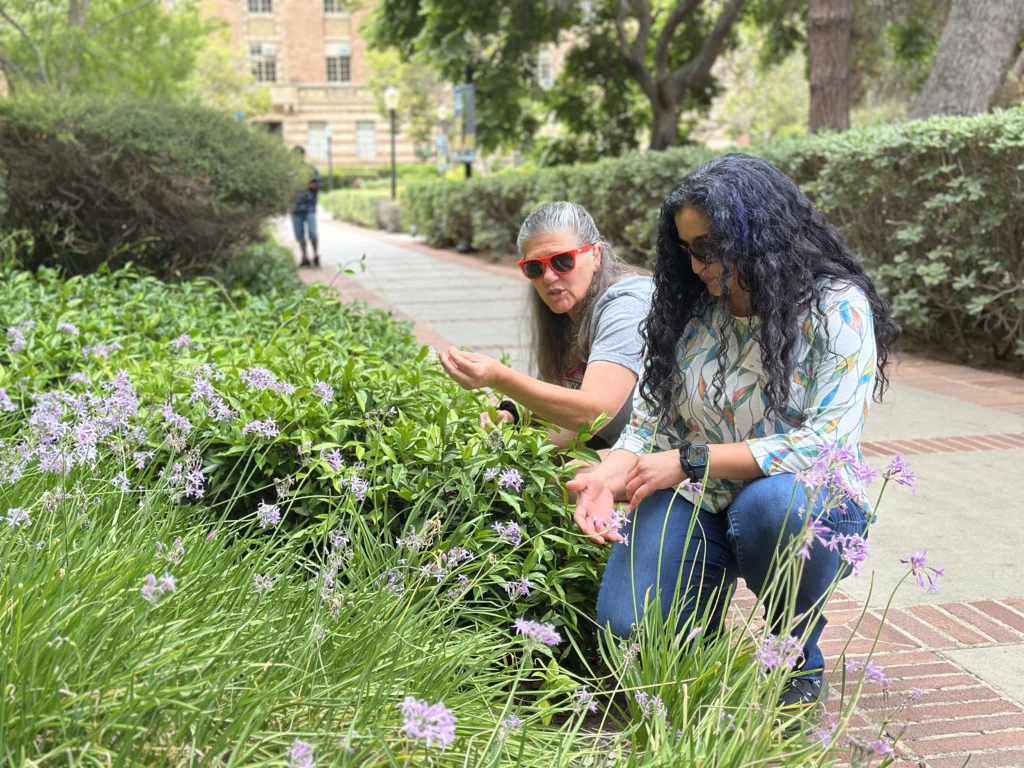
“A year and a half ago, my students wanted a greenhouse for the campus, and we researched why would it benefit our campus,” says Cariaga. “Their first instinct was to ask their parents for the money to donate for a greenhouse. It was $1,600, and I had said, ‘Absolutely not. We’re going to do it the right way [and] look for a grant to purchase a greenhouse and get it built on campus.’”
Supported by Cariaga and Williams, a group of students from the class learned how to write a grant and submitted it to EcoRise, a nonprofit in partnership with the UCLA School of Education and Information Studies that is dedicated to preparing teachers and school leaders to incorporate sustainability and environmental justice into K-12 education. The grant was approved and the greenhouse was purchased and built on the Lab School campus.
The year-long research project was launched for the 2024-2025 school year. Using the Youth-Led Participatory Action Research (YPAR) model, Williams and Cariaga facilitated their students’ work of coming up with research questions and taking the lead in finding out how the benefits of a greenhouse could influence the larger Lab School community.
“We planted microgreens, carrots, cucumbers, and basil,” says Cariaga. “We learned a lot about sharing the space with other students and taught younger students about the greenhouse and invited them in. We taught the community about edible plants, and they were able to taste what we grew from the greenhouse when they visited.
“It was just a big learning that the kids took on themselves and initiated with this research,” she says. “They learned a lot about community, about what to grow, about time zones and when to plant, and took data and maintained the greenhouse.”
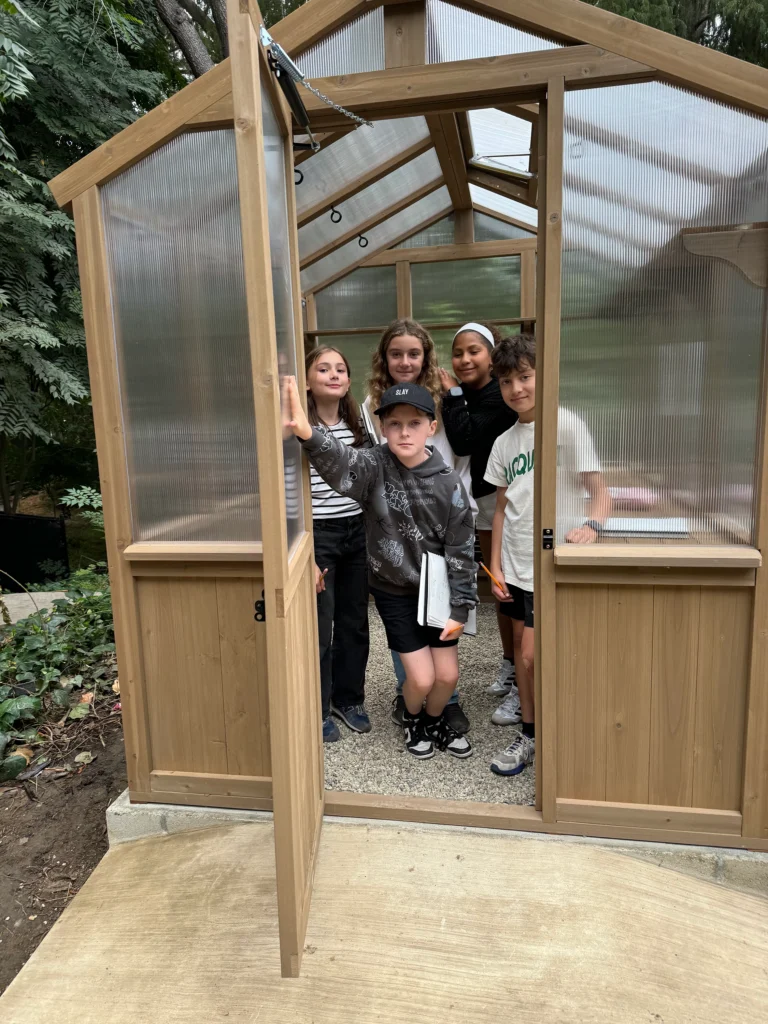
Lee supports ongoing teacher research and professional development at UCLA Lab School. She says that the main result of the greenhouse research project was how the Upper II students could share the space with the rest of the school through creating a curriculum for the kindergarten students, which revealed yet another deep learning experience.
“The students wrote a curriculum around the greenhouse, doing the research themselves,” says Lee. “They pitched this idea to the kindergarten teachers, who set up a time for the students to teach the lessons.
“They taught lessons across all three kindergarten classrooms, including things like teaching the kindergartners how greenhouses work,” she says. “They walked them to the greenhouse across the campus, let them touch the soil and as plants grew, they got to taste-test things [that] were growing. They ended the year with an arts and crafts lesson where they picked specifically colored beads [to make bracelets] to not only have memories around what they’ve learned but to share with others what they’ve been learning about. Blue represented water, brown represented soil, yellow represented the sun, white or clear represented the clear roofs of greenhouses, and green represented the plants.”
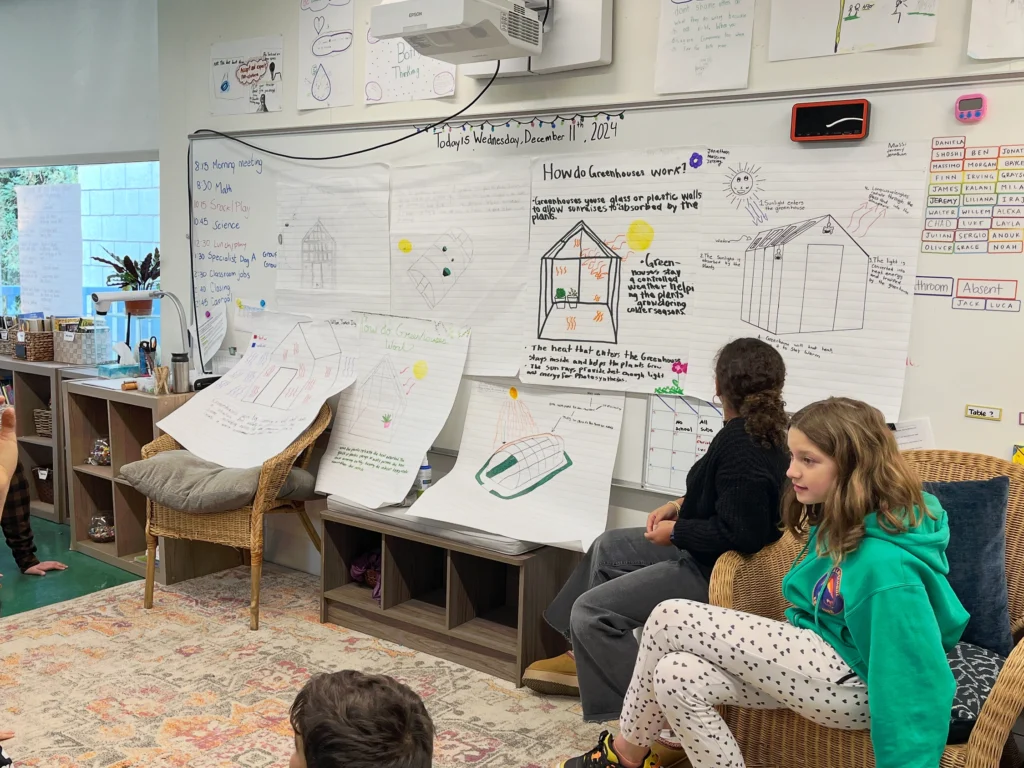
Through presenting these lessons to the kindergarteners, Upper II students gained teaching experience as well as research skills.
“The kids learned about younger children and what kind of learning they need,” says Cariaga. “They realized that they could not talk for a long time because younger kids have shorter attention spans. We went in for about four to five sessions and the first time, they realized they had lost the kids – they were just not paying attention, so we had to tighten it up. And just as teachers do, we had to reflect.
“We changed our next lesson to be more interactive,” she says. “We planted with the kids, we brought them to the greenhouse, we had movement. The [older students] learned so much, not only about presentation, but being concise, keeping it interactive.”
Cariaga notes that the then-kindergartners, “… want to visit all the time. Now they’re first graders, and they bring their parents and show them the greenhouse. They wish that we could have the lessons again. It really inspired the community to think about how this could help our garden and our area here at the Lab School.”
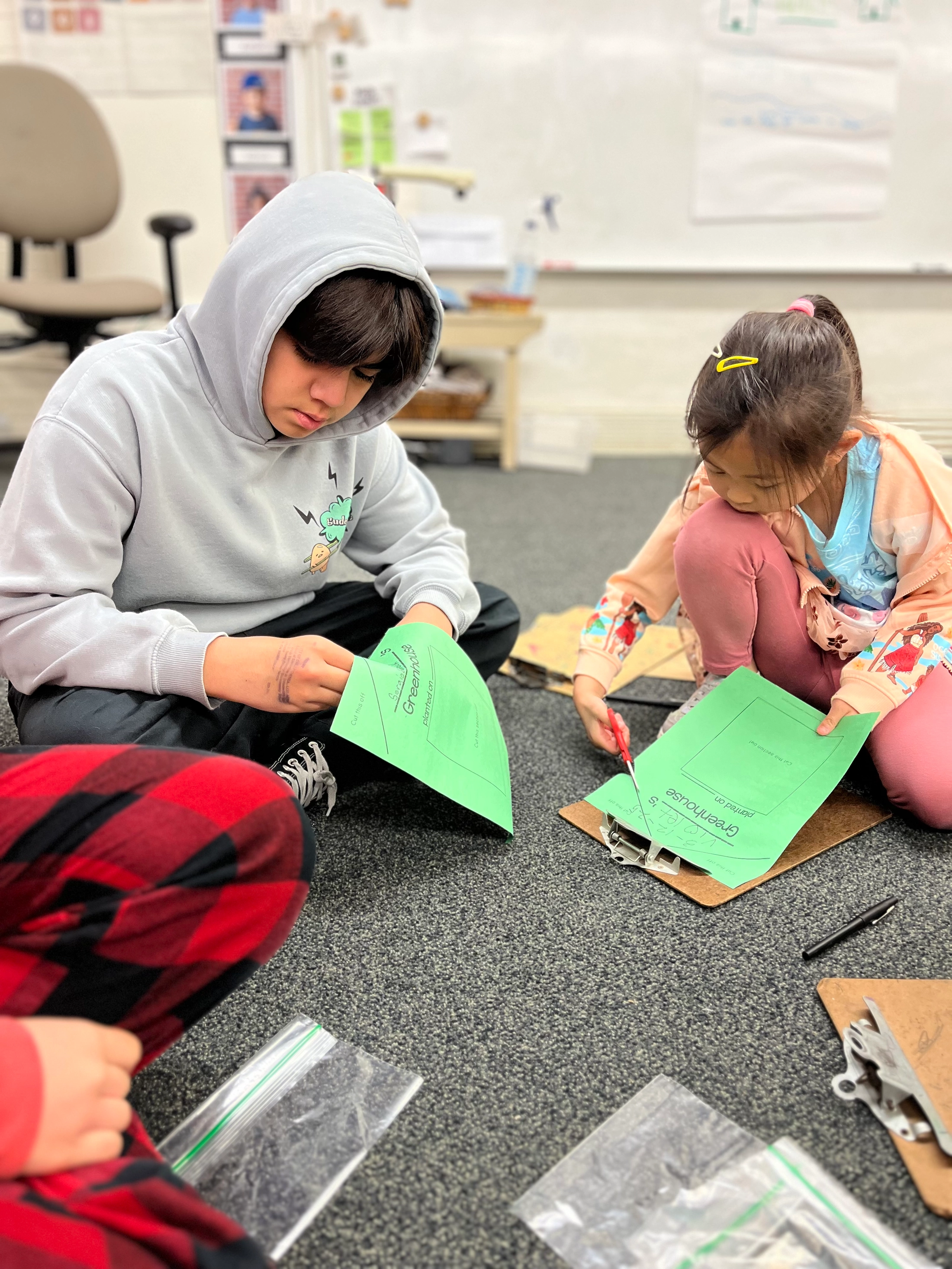
At the end of the school year, the Upper II students who authored the research report requested that Lee make it publicly available on the CONNECT website, where it can be found under “Resources and Briefs.” In addition, a paper titled, “Cultivating Community through Gardening: A YPAR Project on Greenhouses,” by Gayeon Koh, Victoria Daniels, and Mariana Gudino, UCLA undergraduate students who assisted with the project, has been accepted for presentation at the the 2026 AERA Annual Meeting in Los Angeles.
Cariaga says that the students’ vested interest in the project supported their learning, not only of the disciplinary work, but of other skills that will serve them in the future.
“Math was intertwined,” she says. “The problems are seedlings, data collection. We measured the soil, the pH levels. The whole process learning how to be grant writers was a big deal. The need to interview with a panel was another skill to teach.”
Real-world environmental challenges influenced the project when wildfires in nearby Pacific Palisades and Altadena last January affected the gardens and greenhouse at UCLA Lab School.
“Because we let students drive it, that meant they were experiencing all of the complexities and mistakes and hardships it takes to do this work, including water resources and weather,” Lee says. “We did this when the fires happened. A lot of our stuff died during the fires, because we had no access to it.”
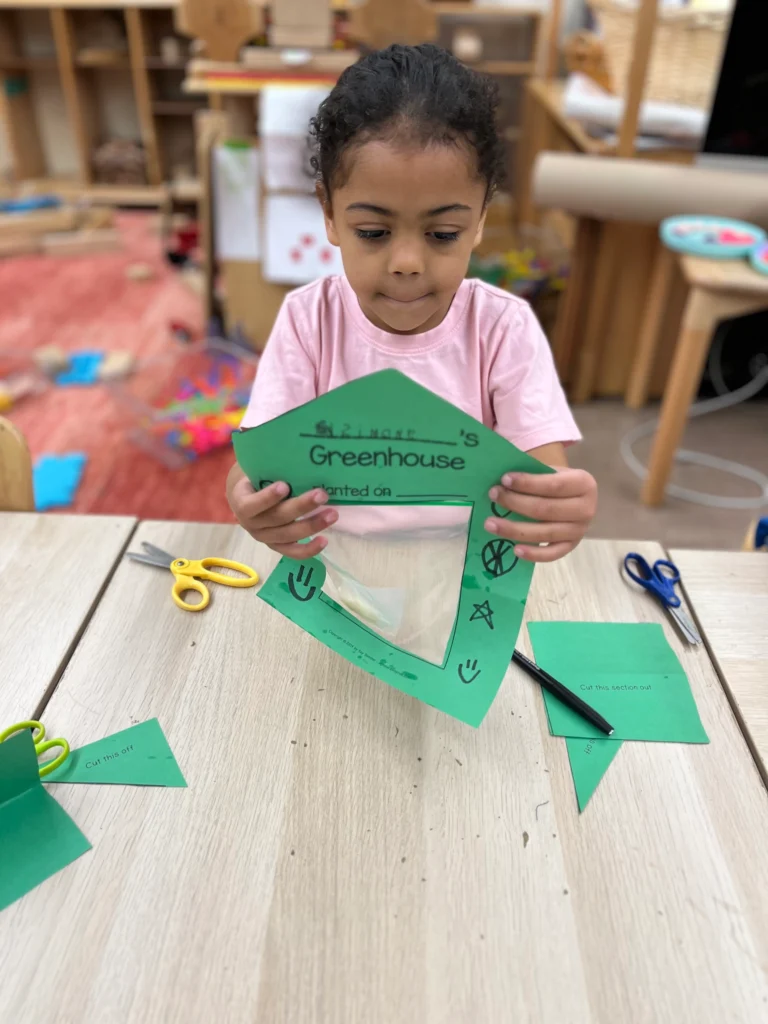
“It’s important for me that the students drive instruction and that they have ownership in it,” says Cariaga. “So, that’s where it started from the ground up. This was a work of love that the kids wanted to do, and now it’s carrying over where they see how it’s important to our environment, to the Lab School, and helping our community see the importance of our spaces and continuing to have them flourish.”
“When we think about environmental education or particularly, environmental justice, often these kinds of gardening projects that young people do in school are not really about environment and not really about environmental justice but are about just planting something,” says Professor Franke. “What was powerful about this project is that the young people took the lead in figuring out what was it about the environment that they wanted to investigate, to work on, to do together. And in doing that, they created something and helped other people participate in it that took environment and environmental justice from their stance.
“This opened up opportunities for them to be the drivers of the work, which means as they leave Lab School and work and talk with other people, they see themselves as the kind of people who are going to take on issues of environment and environmental justice,” says Franke. “The goal in CONNECT is to create these kinds of learning opportunities that spread beyond the Lab School.”
Through CONNECT, those lessons grow—from classrooms to communities, and from research to real-world impact.
